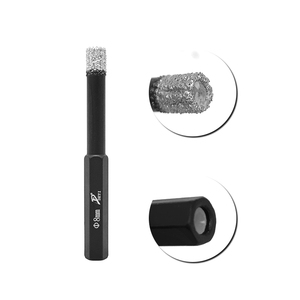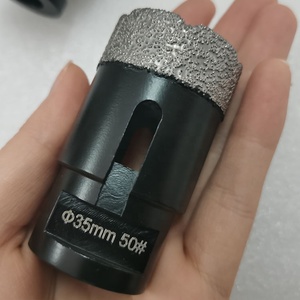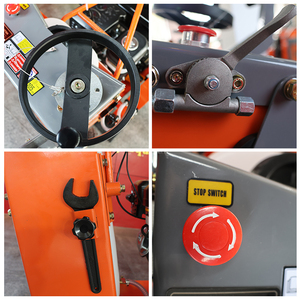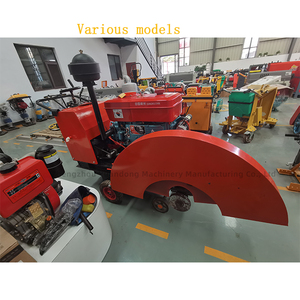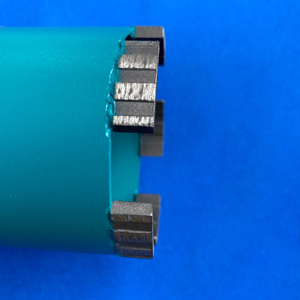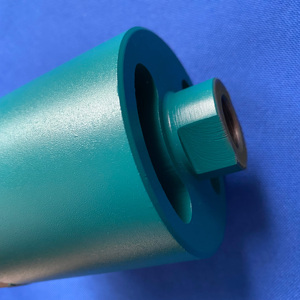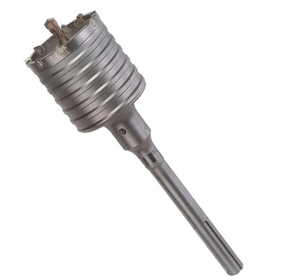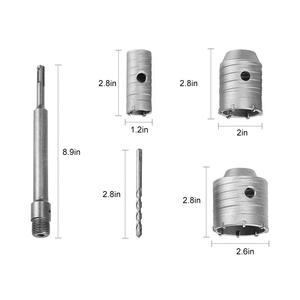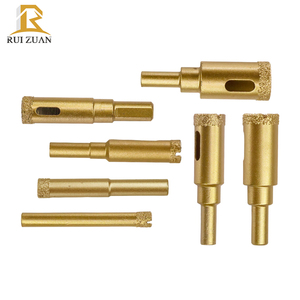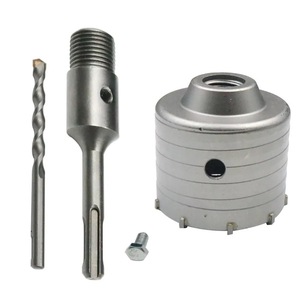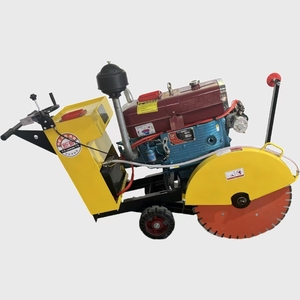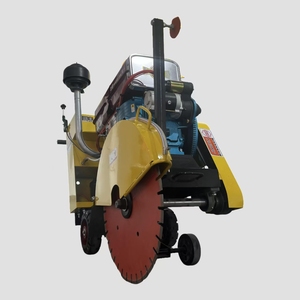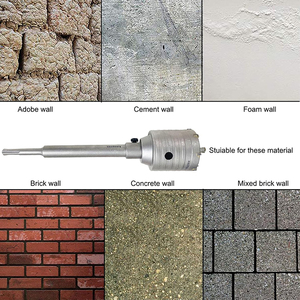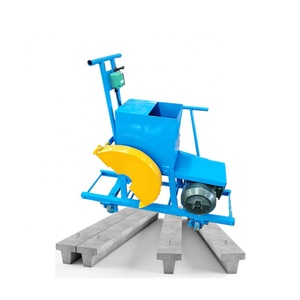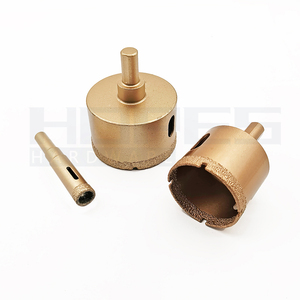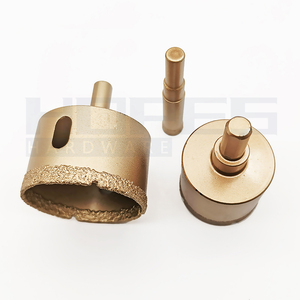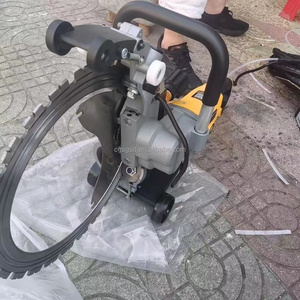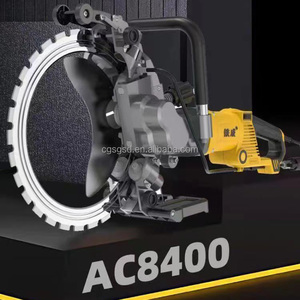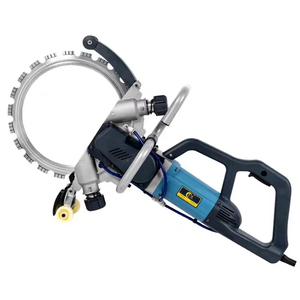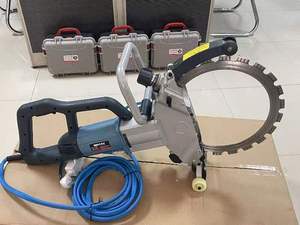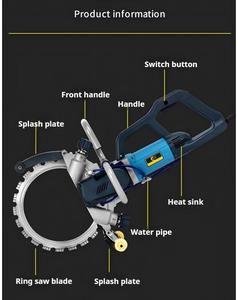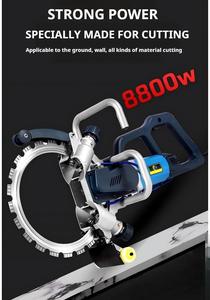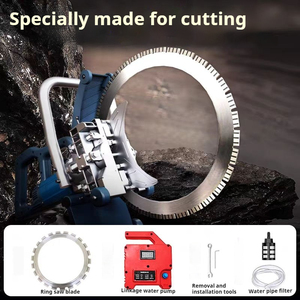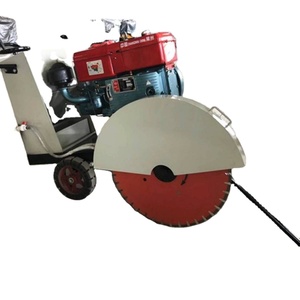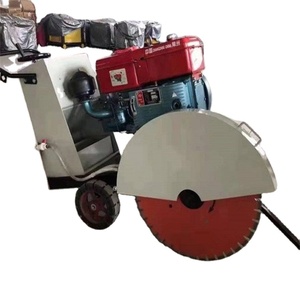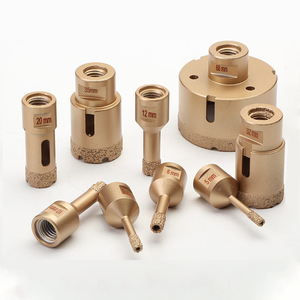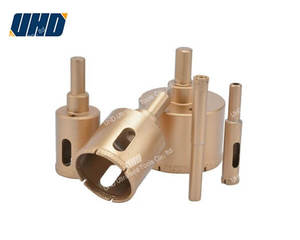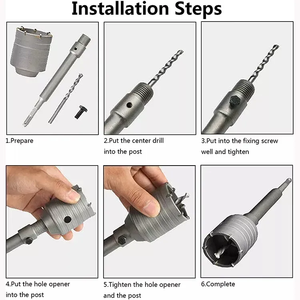Types of Concrete Core Cutters
A core cutter for concrete is available in different types based mainly on the power source used to cut. Each type has distinct features that set it apart from the rest.
- Handheld Concrete Core Drill: A handheld concrete core drill cutter is manually operated when cutting through concrete surfaces. The drill has a drill bit that users can directly control to apply precise cuts. Even though it's manually operated, the drill is practical when cutting small and medium-sized holes. It works well for projects like installing plumbing lines, electrical conduits, and anchor points.
- Gas-Powered Concrete Core Cutter: This power cutter uses a gas engine as the primary power source to cut through concrete. The machine is portable because the power it uses doesn't rely on electricity or external power grids. It makes precision cuts by manually pushing or pulling the machine across the surface of the concrete. The machine is widely used for cutting through thick and reinforced concrete surfaces in construction projects like making road repair jobs. Using a gas-powered core cutter is ideal when working in areas without access to electricity.
- Water-Swivel Concrete Core Cutter: It is a mechanical device used to drill precise holes in concrete while cooling the drill bit with water. The water-swivel part allows water to flow through the drill. This device prevents drill bits from getting too hot or damaged during use. It also helps keep the work area clean by reducing the amount of dust generated while drilling. Core drills with water-swivels are often used to make clean, accurate holes in concrete for the installation of pipes, cables, or anchors.
- Electric Concrete Core Cutter: This cutter relies on electricity as the main power source to create holes in concrete. It has a powerful motor that drives the drill bit as it cuts through concrete layers. The drill is designed with a three-prong bit-locating feature that ensures maximum stability when cutting. It can be mounted vertically and horizontally, producing beveled, smooth-edged holes. An electric core cutter is commonly used in environmental, construction, or plumbing projects that require precise, clean holes in concrete.
Specification and Maintenance
The core cutter comes with many specifications. The power rating(Core drill cutting machine horsepower) determines the amount of work the drill will do. A higher rating indicates that the drill will perform more significant tasks efficiently. The horsepower typically ranges from 1 to 4. The core drill bit size also has a specification. It refers to the diameter of the hole the bit will cut. It can be between 1 inch and 8 inches. The bit also has lengths that range from 6 inches to 24 inches. Users can choose the lengths and diameters based on their needs. Users will also find the handheld or saw-cutting machine types.
Since the concrete cutters usually cut through hard materials, the bits need proper care after use. Manufacturers recommend water to lubricate the cutters during operation. It keeps the bits cool and prevents dust from building up. Once the cutting is done, users should submerge the bits in a water basin. The water will flush out any debris and keep the insides of the bits clean. Some types of core cutters have self-cleaning abilities. When users turn off the machine, they should activate the self-cleaning feature. The water port will release water that cleans the core bit.
Manufacturers advise users not to leave the bits submerged in water for over an hour. After removing the bits from the water, they should dry them completely. Users can use compressed air to dry the insides of the bits. Although it is essential to clean the asphalt and concrete core cutters after use, the manufacturers also recommend not over-cleaning them. Frequent over-cleaning will damage the segments and tools.
Usage scenarios of concrete core cutters
The concrete core drill cutter is used in construction, plumbing, electrical work, and other fields that require precise circular cutting of concrete and masonry. It can be used vertically, horizontally, and at an angle with excellent accuracy.
- Creating openings in walls for pipes, conduits, and cables: Core cutters are mainly used during installation. Cutters create controlled openings in walls to allow pipes, electrical conduits, or cables to pass through.
- Creating openings for HVAC ducts and venting: Core cutters are used to create openings in walls or ceilings for the installation of HVAC ducts and vents.
- Installing plumbing fixtures and water lines: In plumbing Core cutters are used to install plumbing fixtures. They create precise openings in walls or floors for the installation of plumbing pipes and fixtures.
- Installing electrical boxes and outlets: Also, electricians use core cutters to create openings for electrical outlet boxes, switch boxes, or junction boxes in walls or electrical service entry points.
- Anchor and mounting holes: Core cutters are also used to create anchor holes or mounting holes in concrete for the installation of equipment, fixtures, or structural elements. Example, setting anchors for bolts, threads, or hardware accessories.
- Installing windows and door frames: When installing new windows or door frames through a concrete wall or ceiling, a core cutter can be used to make a precise circular cut for the frame installation.
- Creating ventilation or access holes: Core cutters can be used to create circular access openings or vent holes in concrete walls, ceilings, or slabs for inspection, maintenance, or airflow purposes.
- Core cutters can also be used to create circular openings for mounting fixtures, brackets, or supports in concrete or masonry substrates.
How to choose concrete core cutters
Selecting the right concrete core cutter is crucial for ensuring cutting performance, efficiency, and job-site compatibility. Buyers must consider several factors when choosing concrete core cutters for sale.
-
Applications and Material Compatibility:
Before purchasing a concrete core cutter, one must identify the intended application. Consider the materials to be cored, such as concrete, masonry, or asphalt. Select a cutter that matches the specific materials and avoids potential compatibility issues.
-
Cutter Size and Diameter:
Core cutters are available in various sizes and diameters to accommodate different hole sizes. Determine the required hole size for the task at hand and select a core cutter with an appropriate size and diameter.
-
Power Source Compatibility:
Core cutters are available in different power source options, such as electric, gas, hydraulic, or pneumatic. Consider the power source requirements and compatibility with existing equipment on the job site. Additionally, think about the advantages and convenience of each power source option in the application context.
-
Cutting Depth:
When choosing a concrete core cutter, it is important to consider the maximum cutting depth that can be achieved. This is important because certain projects may require cored holes of specific depths. By selecting a core cutter that can reach the desired cutting depth, one can ensure that it is suitable for the particular project needs.
-
Tool Weight and Balance:
When selecting a concrete core cutter, it is important to consider its weight and balance. These factors can have an impact on cutting control and overall operator fatigue during use. By choosing a core cutter that is appropriately weighted and well-balanced, one can ensure better cutting control. Additionally, it can help minimize operator fatigue, allowing for more efficient and comfortable operation.
Q&A
Q: What material can a core drill cutter get through?
A: Core drills are suitable for use on both soft and hard materials. This includes concrete, granite, and asphalt, among others. They are also appropriate for use on material with low and irregular density, such as sand and cement, brick and cement blocks, lime stone, and foam cement.
Q: What are the sizes of core cutters?
A: Core cutters usually range from 10 mm to 150 mm. However, larger core cutter diameters are also available upon request.
Q: What is the maximum cutting depth of a concrete core cutter?
A: The depth of core cutting varies according to the diameter and the capacity of the specific machine. CoreCutting.com suggests that one's best strategy for increasing the core-cutting depth is to utilize the maximum diameter possible. The maximum core-cutting depth for a 4" (100mm) core drill is roughly 12" (300mm) and for a 10" (250mm) core drill is approximately 30" (750mm).
Q: What is the average lifespan of a core cutter?
A: The lifespan of a core cutter generally depends on factors such as usage intensity, cutting material, maintenance, and quality. However, with proper maintenance and care, a core cutter can last for several years.


